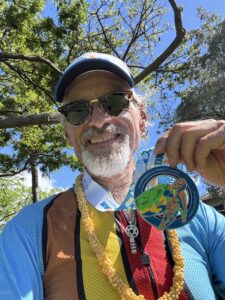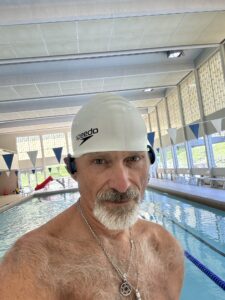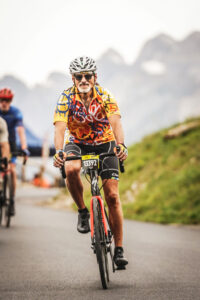Well that didn’t go as planned.

I read last year’s race report and thought I had written about it this year. This year, the weather was good and the swim wasn’t shortened. The winds at Hawi were headwinds and tailwinds, not cross-winds like last year. And it was hot, but it always is.
So the swim was pretty good for me. Somehow, I ended up being one of the last athletes in the water – I was lined up at the right estimated time, but people kept squeezing forward, so I got a late start. They clocked me at a 2:18/100 yd swim, which is respectable for me in the ocean. I saw a small turtle after the first turn and I managed to deal with the sunlight on the return.
And the bike was okay also. Last year I was 2 minutes faster but I attribute some of the lost time to slowing through aid stations – I was very thirsty after the swim and the Perpetuem (Chocolate) mixed with Kona Kola Nuun didn’t cut it, so I grabbed a water bottle at each of the aid stations, which made me feel better. My legs were a little slow out of the gate but after making the turn onto the Queen K, I felt pretty good. So not bad on the bike either.
The run. Well, I could just copy what I wrote last year. About 3/4 of a mile into the run, I was feeling bad. My left quad was very sore and my energy levels were down. I stopped running and started walking, eating an RXBar and a Honey Stinger gel, and then tried to get going again. That’s when I started cramping up – first the quad, then the hamstring and calf on my left leg. From there, it was walk and run. I really felt like quitting (first time I’ve ever felt like that), but I pushed on, hoping that I’d start feeling better. Eventually I got in a little running. I saw that my pace was around 14 minutes per mile, so started playing a game – when the pace slowed to 14 minutes, I ran as much as I could to get under 14 minutes. When I cramped up, I started walking until it hit 14 again. Up until the end, I managed the race this way. It wasn’t great, but I managed to run across the finish line with 7:44:18.
So what’s up with the cramping? I had plenty of electrolytes. Cramping is typically a neurological/electrical problem in the body. During race week, I don’t eat many nuts, which are usually salted, so perhaps my salt levels were lower for the race. But fatigue can be another cause of cramping. Maybe my training isn’t quite right, especially as I’m aging. I did a couple of bricks with 2 mile OTB runs after 60 miles on the bike and felt great, but on race day, that just didn’t carry over. Maybe I need longer OTB runs. I’m not sure yet, but this’ll be on my mind as I prepare for the Tri-Cities 70.3 in September.

If only I could age down next year instead of aging up!!!




